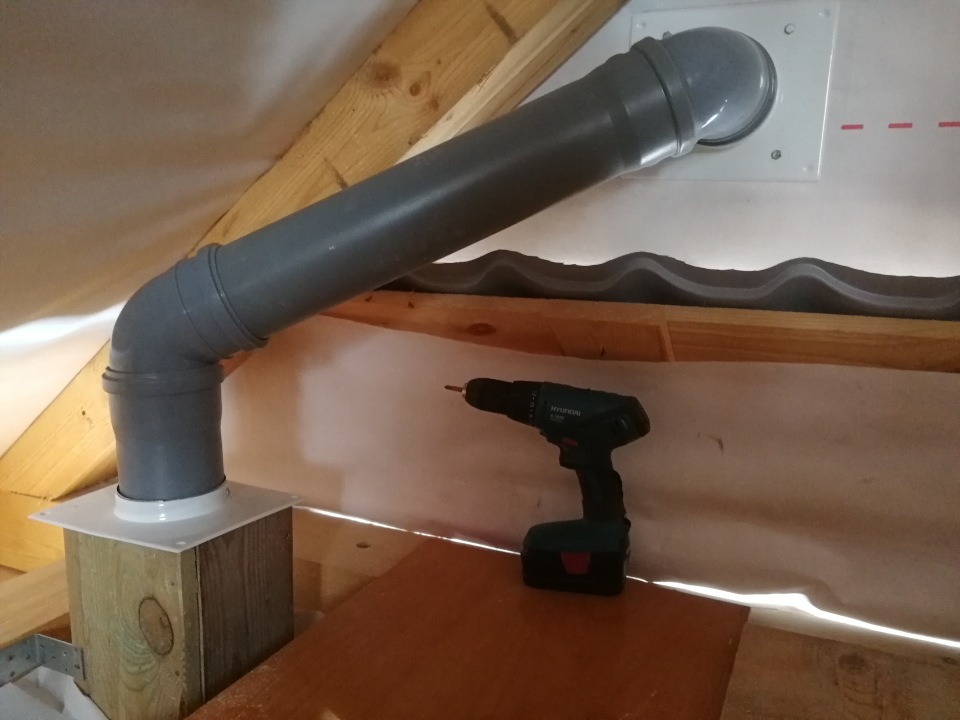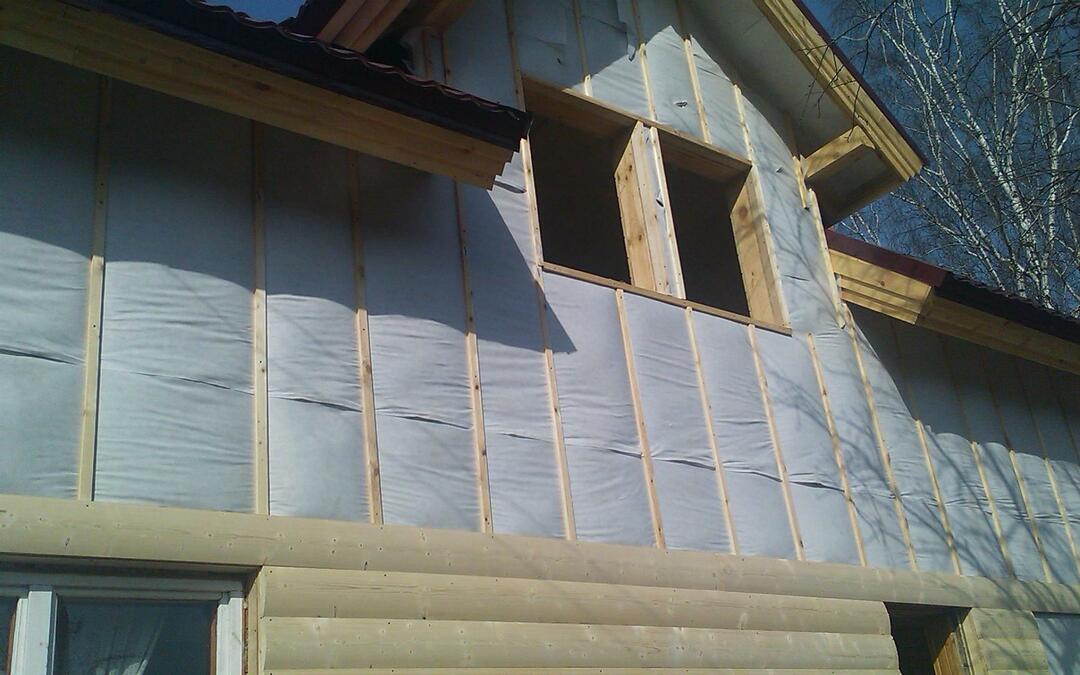Competently arranged ventilation in a private house through the pediment is the result of correct design. There are not so many options for organizing it, and all of them have long been known and calculated. But for some reason, this very question raises a lot of doubts among the owners of private houses. Have you noticed how many different versions are being discussed on construction forums? People are trying to find new solutions and "try on" ready-made ones.
In fact, everything is simple. To be sure of the choice, you need to know the basic rules for organizing air exchange and be aware of the latest innovations in the construction market. Especially when it comes to the independent construction of a building: in this case, it is worth familiarizing yourself with the current regulations, as well as with the features of materials and structures.
In this article, we examined all possible ventilation options through the pediment, touched upon the goals, technological methods and the main characteristics of the materials used. After reading it, it is easy to navigate the already proven methods and choose the most suitable one for yourself.
The content of the article:
- The goals of arranging ventilation on the pediment
- Air exchange rules
-
Methods for organizing ventilation through the pediment
- Installation of ventilation valves
- Installation of grilles and skylights
- Arrangement of ventilated gables
- Ventilation through the gable with a low roof
- Conclusions and useful video on the topic
The goals of arranging ventilation on the pediment
In a ventilated room, the used air is constantly replaced with fresh air. If behind the pediment there is attic, then such a replacement provides a comfortable microclimate for those living in the house.
And if there is an attic behind it, then the benefits of ventilation will be, first of all, for the structural elements of the roof.

According to SNiP 41-01-2003, the difference between the temperatures of the external environment and the air inside the cold attic should not exceed 4 degrees. This will protect against excessive moisture and ice formation.
If you properly organize the exit of air ventilation through the pediment, then the optimal temperature and humidity conditions will be observed inside. This means that building materials will not suffer from condensation, will not change their heat-shielding and strength characteristics.
Air exchange rules
To effectively change the air, remove household vapors and prevent the formation of condensation, it is necessary to correctly calculate the total cross-sectional area of all ventilation openings. According to the rules, it must be at least 1/500 of the overlap area.

Properly organized air exchange will not only prevent excess moisture, but also equalize internal and external pressure. And, accordingly, it will protect the connecting elements of the roof from destruction
In addition, it is important to consider the properties of the building materials. Modern versions of insulation and moisture protection films allow less air to pass through than their predecessors. Therefore, more efficient ventilation is required.
Therefore, when using materials with a high degree of tightness, it is worth increasing the cross-sectional area to 1/400 and even to 1/300 of a fraction of the total overlap area.
Methods for organizing ventilation through the pediment
The main methods of venting out through the pediment include: installing ventilation valves, installing gratings and dormers, as well as erecting a ventilated pediment.

Sometimes, in order not to violate the integrity of the roofing, the owners remove ventilation pipes through the pediment. In this case, it is worth remembering that the horizontal output will only work in winter. In the summer, due to the lack of temperature difference, you will have to supplement the system with a fan
All three methods are considered interchangeable and complementary. Moreover, each of them can exist separately or be part of a system containing aerators, turbo deflectors and air vents.
Installation of ventilation valves
Vent valves are not the cheapest, but a very good option. Especially when it comes to the most modern models.
In addition to air renewal, they are capable of:
- regulate the volume of incoming air;
- reduce noise levels;
- direct the air flow to the heating radiator;
- filtering.
The principle of operation of the device is simple: capturing the required volume of air from the outside, it filters it, directs it to the noise absorber, and then to the radiator. This is how a warm, fresh stream enters the house.

Externally, the ventilation valve looks like a regular ventilation grill, and inside it is a small box attached to the surface of the pediment
In this case, the movement of air can be initiated by the difference between external and internal pressure or be started mechanically using a fan.
Installation ventilation valve is carried out in several stages:
- Drilling a through hole at a downward angle of 5 degrees - this is necessary to remove moisture that accidentally got outside.
- Installation of pipes and insulation.
- Fastening the body to the pediment.
- Cover installation.
To implement the air heating function, the valve body must be placed directly above the heating radiator. The required distance is indicated in the instructions for the device.
Installation of grilles and skylights
Grilles and dormers are usually used to organize air exchange in cold attics.
For the attic, this method is not suitable, since in the cold season it violates the comfortable temperature regime.

Wishing to preserve the natural style during the construction of a country house, many choose wooden lattices. In fact, this is not the best solution, since the tree is inherently resizable with fluctuations in moisture levels. It is more practical to give preference to plastic models with a wood-like design
By form and lattices, and dormers can be very different: from traditional circles and ovals, to curved triangles and polygons. Their main purpose is to lay a natural air duct through the pediment. Therefore, their design is the simplest. It includes a box and a casing.
Even novice builders can install such a structure. For this you need:
- Make a hole in the wall of the pediment that matches the size and shape of the purchased lattice.
- Install the product into the resulting opening.
- Attach the platband from the outside.
According to the standards, the lower point of the lattice or dormer should be located at 80-100 cm from the upper point of the overlap. This is the only way to ensure efficient and regular air exchange.

Some models are sold with a built-in mosquito net. It is better to choose those instances in which this mesh can be removed. Otherwise, cleaning it from dust, dirt and insects can become a very difficult task.
Another rule for installing gratings and dormers concerns the location of blinds on them.
They must always point downwards during installation. Even if the design of the product allows you to change the angle of their disclosure.
Arrangement of ventilated gables
The principle of creating ventilated gables is to arrange gaps between materials with different thermal properties.
There are two ways:
- One level when a gap is established between the exterior trim and the windscreen.
- In two levels, when it is necessary to leave small distances between the external finish and the film, as well as between the film and the insulation.
The first method can only be used when using a membrane sheet instead of a classic polyethylene film. Unlike the film, the membrane ensures the unimpeded escape of condensate from the insulation. Therefore, there is no need for a gap between them.

Membrane interlayers are believed to increase costs due to their high cost. This is not true. The cost of the membrane is really higher than the cost of the film. But even building materials are spent much less when using it. Therefore, it is better to opt for a modern "breathable" canvas.
It is customary to equip the gap itself with wooden bars 2-3 cm thick. With their vertical arrangement, continuous installation is allowed, when the bars fit tightly to each other along the entire height of the pediment.
In the case of a horizontal arrangement, it is necessary to fasten them at a distance sufficient for the installation of the finishing. Otherwise, an obstacle will be created to the natural movement of air masses.
Ventilation through the gable with a low roof
Owners of private houses with a low roof have another option for arranging ventilation through the pediment.
For this, a large ventilation grill is made of wooden slats and installed directly under the canopy.

For the manufacture of planks, it is better to take conifers, since they are more resistant to atmospheric vibrations. Bog oak also performed well as a ventilation grill, but it is much more expensive
The lattice creation algorithm is simple. The first step is to prepare a supporting frame that will hold the entire structure on the pediment.
Then you need:
- attach to it a protective frame of two planks connected by a "house";
- chamfer at an angle of 22 to 45 degrees from all crossbars of the grill;
- fill the lattice with crossbeams, starting with the top - the shortest.
The heads of bolts and nails used to fasten the boards are recommended to be treated with a water-repellent sealant.

To protect yourself from blood-sucking insects, you can mount a mosquito net into the grill. It is better to install it from the inside and fix it already at the installation stage
After that, it remains only to attach the finished structure to the upper part of the pediment and build small ebb tides from thin sheet metal.
We also recommend reading our other article, where we talked in detail about ventilation design rules in a private house.
Conclusions and useful video on the topic
The example of external grilles shows how different the products needed for arranging ventilation can be:
You can arrange ventilation through the pediment of a private house in different ways: using homemade and purchased grilles and dormers, ventilation valves and ventilated structures pediment.
Calculations must take into account the physical characteristics of the materials used, the area of overlap and seasonal temperature indicators. It is also worth keeping track of new items in the construction market and do not forget about the possibility of an individual approach to solving standard problems.
If you are at the stage of choosing a suitable method or already have relevant experience, share your thoughts with other users. In the form below you can post your questions, advice. In addition, ready-made diagrams, drawings and sketches can be posted here. A joint discussion always allows you to find the right solution. Join us!


